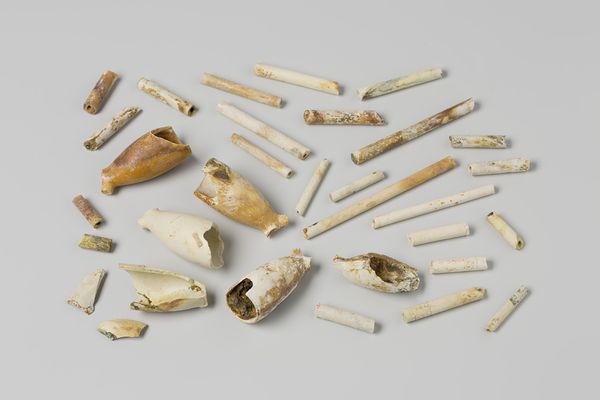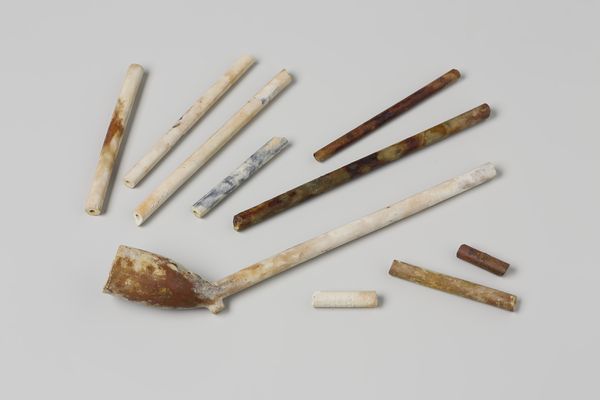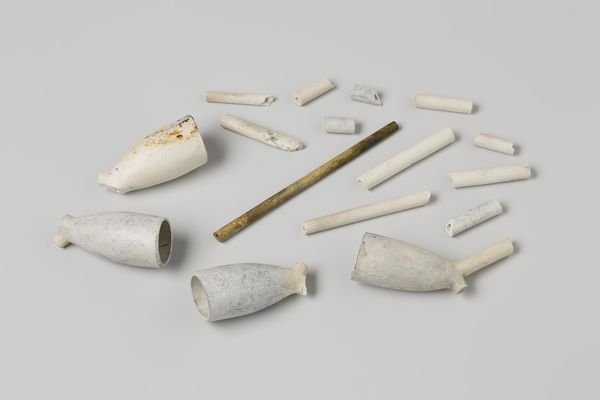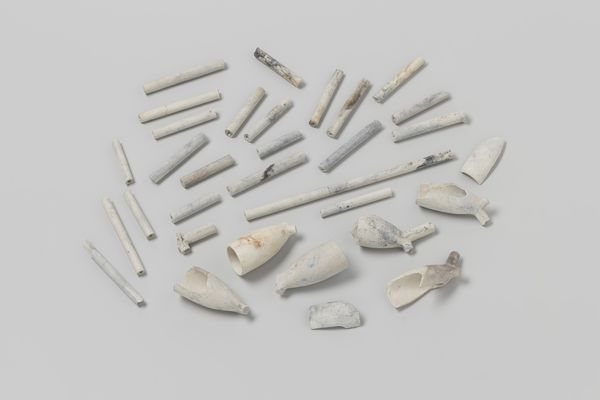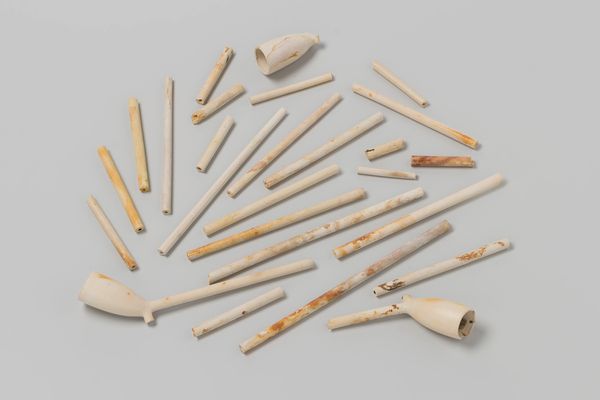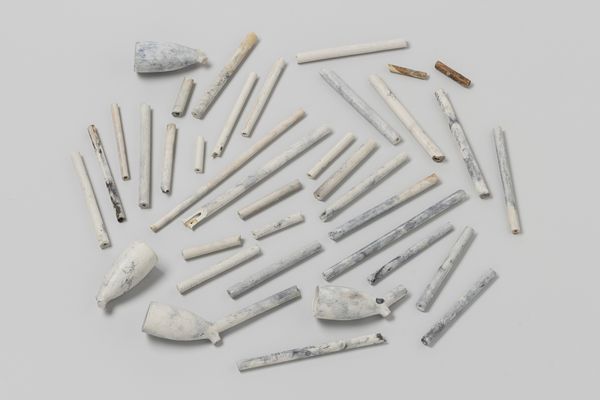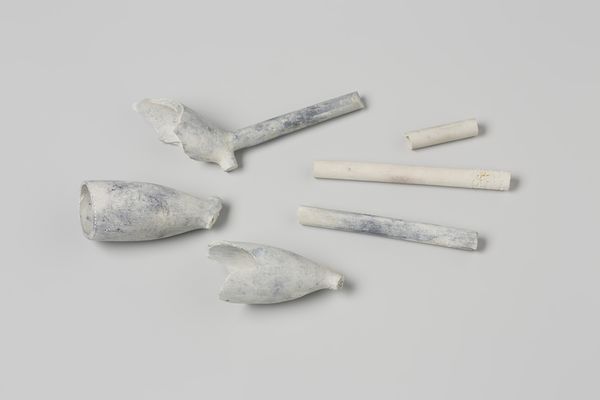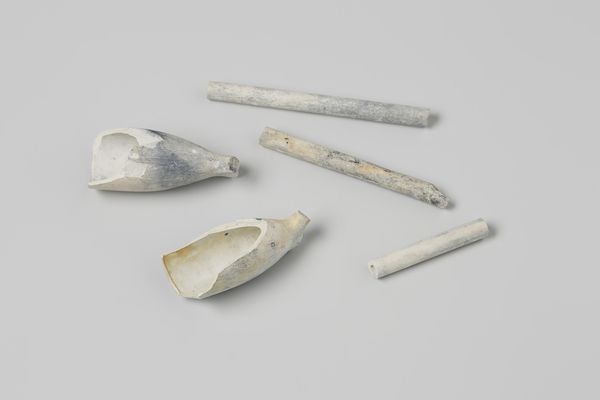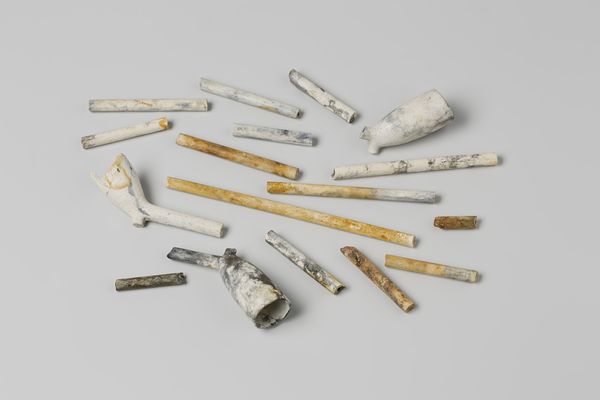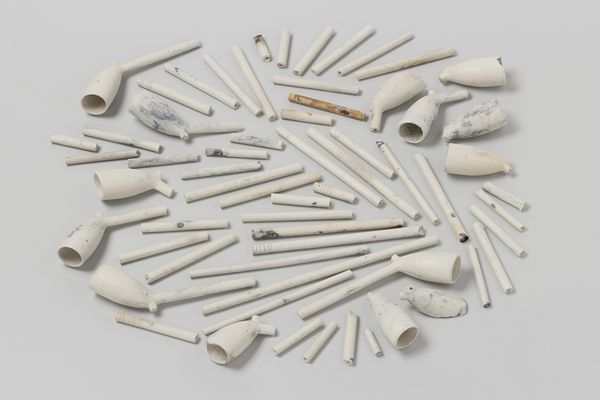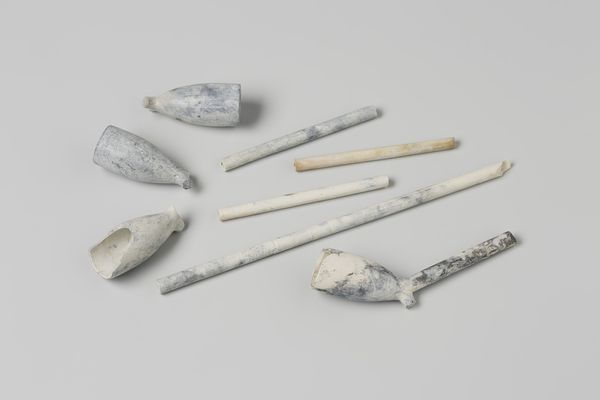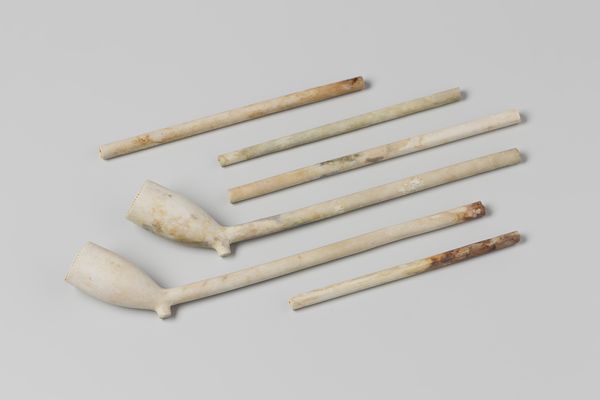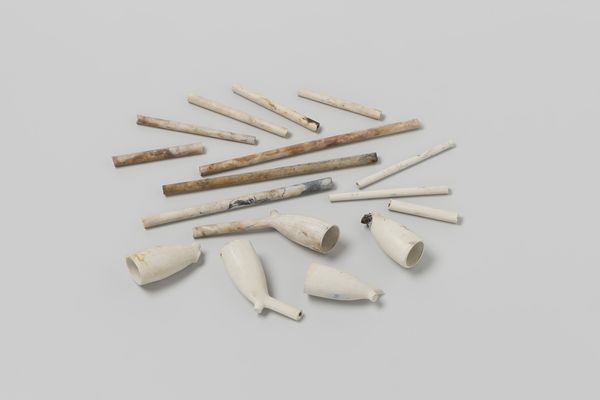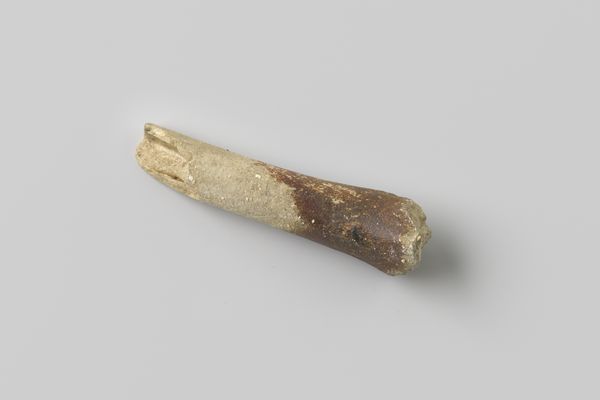
Fragmenten van pijpenkoppen en pijpenstelen uit het wrak van de Oost-Indiëvaarder 't Vliegend Hart Possibly 1700 - 1735
0:00
0:00
ceramic
#
dutch-golden-age
#
ceramic
Dimensions: length 4.9 cm, diameter 2 cm, length 2.1 cm, diameter 0.6 cm
Copyright: Rijks Museum: Open Domain
Curator: These fragments, potentially dating from 1700 to 1735, are remnants of clay tobacco pipes salvaged from the wreckage of the Dutch East Indiaman 't Vliegend Hart. Editor: There’s something intensely poignant about them, isn't there? These unassuming pieces of ceramic, whispers of lives lived and lost at sea. The randomness of their arrangement evokes a sense of quiet desolation. Curator: Absolutely. Beyond their aesthetic impact, these shards offer tangible insights into the material culture surrounding the tobacco trade during the Dutch Golden Age. Think about the labor involved in both the cultivation of the tobacco, and the manufacturing process of these pipes – their simple construction belies a vast and complex economic network. Editor: I imagine sailors on long voyages, finding solace in their pipes... maybe carving little details into them when they were bored? Each fragment probably carries an echo of some shared joke or solitary thought out there on the open sea. You know? It would be great to think one could find a fragment bearing a signature of some kind. Curator: Indeed. The global movement of goods in the early modern period is brought to life by the survival of these objects; everyday artefacts reveal so much when properly contextualized, questioning boundaries between utilitarian and cultural objects. How do we reconstruct meaning from these scraps, so heavily reliant on external context, without descending into mere fantasy? Editor: Precisely, like picking up fragments of a dream... We can feel their human touch, the slight variations in form suggesting that the touch of a different artisan touched each and every bit. So close and so far, you see, what touches us from their fate is precisely a sensation: what does it feel to be here now contemplating this little piece of theirs? Curator: Well said! It brings the larger story of maritime trade and colonial ambition down to an almost domestic level – the daily rituals, pleasures and commodities within reach of ordinary individuals connected by Dutch naval trade in the 18th century. Editor: These unassuming relics whisper tales of journeys, mishaps, and fleeting human moments; now transformed, it’s interesting how art is never finished but simply abandoned, as a kind of wreck. A humbling and affecting meditation on the transient nature of both empire and human existence, wouldn't you say?
Comments
No comments
Be the first to comment and join the conversation on the ultimate creative platform.
